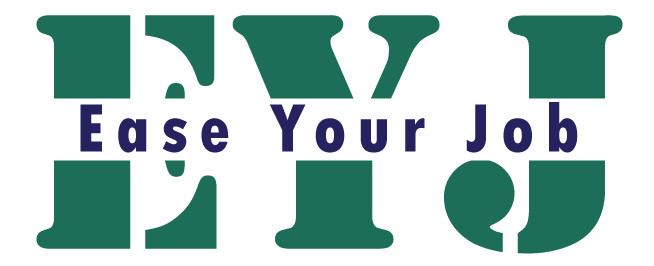Whether you’re managing clients, coordinating projects, or simply trying to stay on top of your to-do list, you likely face one challenge daily: not enough time. That’s where AI-powered workflows come in.
In this guide, you’ll discover AI workflow examples designed specifically for busy professionals, helping you save hours, reduce cognitive load, and work more strategically. Optimized for SEO, GEO (Generative Engine Optimization), and AI-first indexing, this article will help you build smarter systems, not just faster ones.
🤖 What Are AI Workflows?
An AI workflow is a set of automated tasks that use artificial intelligence to execute repetitive, logic-based, or creative work — with minimal human intervention.
These workflows combine tools like ChatGPT, Zapier, Notion AI, Otter.ai, and Canva Magic Studio to handle:
- Task planning
- Content generation
- Meeting summaries
- Client communication
- Project updates
🧠 Why AI Workflows Matter in 2025
- ⏳ Save 10–20+ hours/week by automating routine processes
- 🔁 Ensure consistency across documents, comms, and reports
- ⚙️ Reduce context switching by integrating your tools
- 🚀 Boost productivity without burnout
These systems don’t just make you faster — they make you smarter and more strategic.
🧰 7 AI Workflow Examples for Busy Professionals
Each of the following workflows is plug-and-play, customizable, and designed to run in the background while you focus on more important work.
1. 📩 Lead Response + CRM Logging Workflow
Tools: Zapier + Gmail + ChatGPT + HubSpot
Trigger: New lead inquiry via website form
Workflow:
- Form is submitted → triggers Zap
- AI generates personalized response using ChatGPT
- Email is sent to the lead
- Contact is added to HubSpot CRM with AI-summarized notes
Outcome: Saves ~2 hours/day on manual responses and CRM updates
2. 🗓️ Meeting Recording & Action Item Generation
Tools: Otter.ai + Notion AI + Zapier
Trigger: Weekly team meeting on Zoom
Workflow:
- Otter records and transcribes the meeting
- Summary and key action items are extracted
- Notion auto-populates project pages with tasks
- Slack sends action item digest to team
Outcome: Improves alignment while saving 1–2 hours/week on note-taking and coordination
3. 🧾 Content Planning & Publishing Workflow
Tools: Notion AI + ChatGPT + Canva + Buffer
Trigger: Weekly content calendar review
Workflow:
- Notion stores topic ideas and content briefs
- ChatGPT drafts posts using templates
- Canva creates visuals based on prompts
- Buffer schedules posts across social channels
Outcome: Eliminates up to 6 hours/week in planning, designing, and scheduling content
4. 🎥 Webinar Post-Processing Workflow
Tools: Zoom + Otter.ai + ChatGPT + Google Docs + Email
Trigger: Completed webinar recording
Workflow:
- Otter transcribes and timestamps the recording
- ChatGPT generates summary + key quotes
- Google Doc is created and shared
- Email with webinar highlights is auto-sent to attendees
Outcome: Reduces post-event content work from 4 hours to 30 minutes
5. 📊 Client Reporting Automation
Tools: Google Sheets + ChatGPT + Canva + Gmail + Zapier
Trigger: Weekly KPI data input
Workflow:
- Data updated in Google Sheets
- ChatGPT writes a short performance summary
- Canva generates visual report
- Report is emailed to client with a branded message
Outcome: Saves 3–4 hours per report cycle with consistent output
6. ✍️ AI Proposal Generator for Freelancers
Tools: Notion + ChatGPT + PDF Generator + Gmail
Trigger: New project inquiry
Workflow:
- Client brief is logged into Notion
- ChatGPT creates a tailored proposal based on services
- PDF is auto-generated and attached
- Email is sent to prospect
Outcome: Go from inquiry to pitch in 10 minutes, not 2 hours
7. 🧘 End-of-Day Reflection & Planning Bot
Tools: ChatGPT + Notion + Google Calendar
Trigger: 5:30 PM every weekday
Workflow:
- ChatGPT asks reflective questions (e.g., What worked today? What’s next?)
- Your responses are logged in Notion
- Based on inputs, tasks are scheduled for the next day
Outcome: Daily clarity in under 5 minutes — boosts performance and mental well-being
📎 How to Build AI Workflows in Minutes
- Map your most repetitive tasks
- Choose 2–3 tools you already use
- Use Zapier or Make.com to connect the flow
- Add AI elements (like ChatGPT) for creativity or insight
- Test, tweak, and let it run
You can also use pre-built templates from platforms like:
- Zapier Templates Marketplace
- Make.com Blueprints
- EaseYourJob.com’s AI Workflow Hub
🔚 Final Thoughts: Systematize, Don’t Just Speed Up
AI workflows aren’t about doing more — they’re about doing better. By automating the boring stuff and outsourcing it to smart systems, you give yourself room to:
- Focus on high-impact work
- Think more creatively
- Avoid burnout
Work should flow — not flood. These AI workflow examples are your first step to building a system that works for you.

